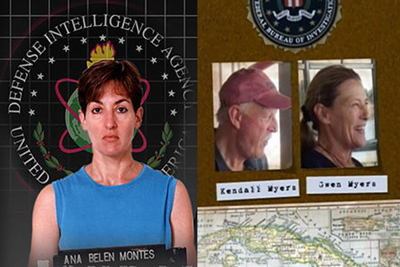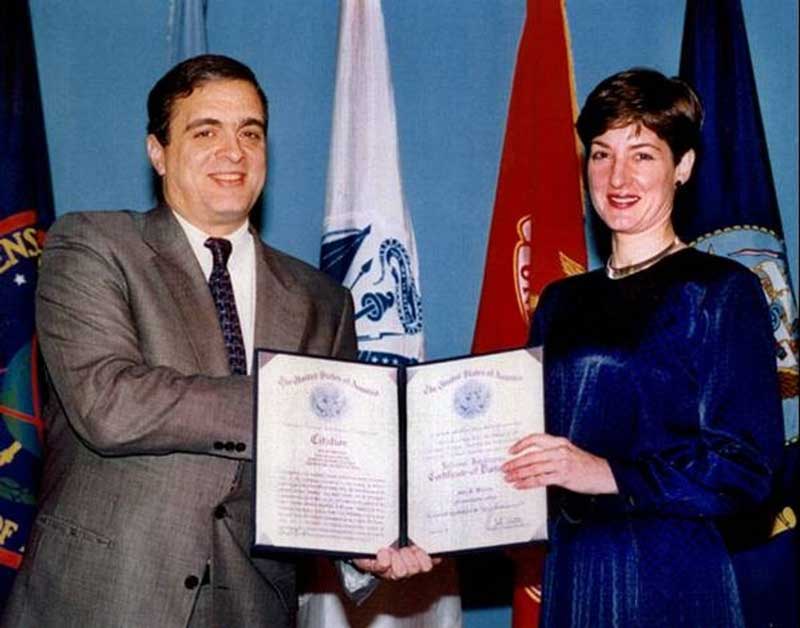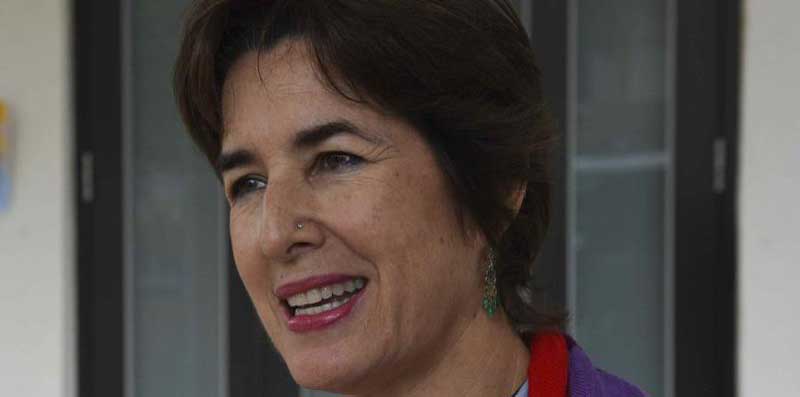
Ana Belen Montes, a woman of 44, was arrested by FBI, just 10 days after the shocking attacks of 9/11, though she had nothing to do with the terrorist strikes. However, her arrest was very much related to the security of the country at the time of a national disaster. Gradually, it turned out that as a senior analyst with the Defense Intelligence Agency, she was spying for the Cubans and was soon to have access to classified information about America’s secret plan of invading Afghanistan during the following month.

Born to Puerto Rican parents on a US Army base in Germany on 28 February 1957, Ana Belen Montes grew up like millions of other girls during the Cold War, as the oldest of four children in a middle-class family. Her father served as an Army doctor and by the time she entered high school, her father had retired from the army, started his private practice in Baltimore and settled the family in Towson, Maryland.
After her graduation from Loch Raven High School in 1975, Ana earned a degree in foreign affairs from the University of Virginia in 1979 and completed a master’s degree at the School of Advanced International Studies at Johns Hopkins University, Maryland. During those days, she often openly criticized the US policy to support the fighting of the rebels against the communist regimes in Central America, as she felt that the US have no right to impose its will on other countries. However, her Puerto Rican father had conservative views on politics and her brother and sister, Tito and Lucy, had already opted the career of FBI officers. Even, her former boyfriend, Roger Corneretto, was an intelligence officer specializing in Cuba for the Pentagon. In the mean time, while Ana Monte was working as a clerk at the Department of Justice in Washington, her political views caught the attention of Cuban recruiters and as they approached her, she became agreeable to help Cuba.

Ana Montes was aware that to supply valuable information to Cuba, she needs access inside the intelligence community, so she applied for a job at the Defense Intelligence Agency (DIA), the Pentagon’s major producer of foreign military intelligence. By the time she started working there in September 1985, she was already a fully recruited spy of Cuba. At the beginning, she worked as an intelligence research specialist in her first assignment at Bolling Air Force Base in Washington and in 1992, she was selected for the Exceptional Analyst Program of DIA. Subsequently, she traveled to Cuba to study the Cuban military.
For the next 16 years, Ana Montes excelled as an entry-level research specialist and was promoted again and again. Within a short time she became the principal analyst for El Salvador and Nicaragua and later was named the DIA’s top political and military analyst for Cuba. Gradually, she became one of the government’s most shrewd interpreters of Cuban military affairs and also proved to be skillful in shaping, often softening, US policy toward the island nation. Nicknamed the Queen of Cuba, Ana Belen Montes was awarded a certificate of distinction, presented to her by the then CIA Director George Tenet in 1997.

She travelled four times to Cuba for sessions with Cuba’s top intelligence officers. On two occasions she used a bogus Cuban passport and disguised herself in a wig, roaming aimlessly first in Europe to cover her tracks. Two other times she got Pentagon approval to visit Cuba on US fact-finding missions. She would meet at the US Interests Section in Havana during the day, but used to slip away later, to brief her Cuban superiors.
For 16 years, Ana Montes adopted a unique espionage technique at the DIA that helped her to evade detection. She never took away any document or file or hard copy from works. Instead, she memorized and kept every detail in her head from the sensitive documents and typed them up from memory to her laptop at home. After that, she used to transfer the information onto encrypted disks and after receiving instructions in code via short-wave radio from the Cubans, she used to meet her handler, as arranged and turn over the disks.

However, as the security officials learned about her political views, they became concerned about her access to sensitive information, but they had no reason to believe she was sharing secrets. Her downfall began in 1996, when acting on a gut feeling, DIA counterintelligence officer Scott Carmichael reported to a security official that he felt Montes might be under the influence of Cuban intelligence.
Four years later, Carmichael heard the FBI was looking for an unidentified spy inside the DIA who was working for the interest of Cuba. When he looked up a list of DIA employees who visited the US Naval Base at Guantanamo Bay, Cuba, at a specific time, he came across a familiar name, the name of Ana Montes. Without any delay, Carmichael and FBI agent Lapp teamed up to prove that the DIA's Queen of Cuba was really a spy. They tapped her phones, followed her and figured out that Montes was using various pay phones around Washington for making calls. When they traced the numbers she was calling, they found that those particular numbers were associated with Cuban espionage. As they searched her house in Cleveland Park, Washington, in her absence, the agents found a shortwave radio that her Cuban handlers used to send her messages.

The 9/11 attacks shortened the Montes investigation and ended the hope of catching the Cuban handlers of Ana Montes. It was revealed that Ana was chosen for a team that would analyze bombed targets after the US invasion of Afghanistan, which would have given her the access to the Pentagon war plans. Ana Montes was called into a DIA conference room on 21 September 2001and was arrested, which ended the career of one of the most potentially damaging spies in the recent history of the United States.
It was determined by the investigators that Ana Montes had passed a considerable amount of classified information to Cuba, including the identities of four US spies in Cuba. It was alleged that Ana Montes informed the Cuban intelligence officers about a clandestine US Army camp in El Salvador. She was named as being directly responsible for the death of Green Beret SGT Gregory A. Fronius, who was killed at El Paraiso, in El Salvador on 31 March 1987. During the attack of the Farabundo Martí National Liberation Front.

According to the FBI, except the payment for few actual expenses, Ana Belen Montes never took money for the secrets she gave to the Cubans. She committed the espionage for moral reasons, as she felt that the United States has done some things that are terribly cruel and unfair to the Cuba. She felt morally obligated to help the island to defend itself from the efforts of the United States to impose American values and political system on it. However, she could do it legally, as one can work against the United States from many legal organizations in the country. =
In 2002, Montes pleaded guilty to one count of conspiracy to commit espionage, the charge which could have carried the death penalty. But, she was sentenced to 25 years in prison and five years probation in October of the same year, as she struck a plea bargain with prosecutors and agreed to disclose the FBI and other authorities the details about her spying activities from the time she began in 1985 to the day she was arrested. She was incarcerated at the Federal Medical Center Carswell in Fort Worth, a city in North Central Texas, in a 20-inmate unit reserved for the nation’s most dangerous female offenders. It is equipped with specialized medical and mental health services to the female offenders, which she described to her sister Lucy, as almost like a lunatic asylum. However, she is patiently waiting for her tentative date of release, which is listed as 8 January 2023.
